What does French Limestone have to do with English Heritage?
The history of French stone being used for English buildings goes back to the days of William the Conqueror. Following the Norman Conquest of 1066, French stone from the Caen quarry in Normandy was used to build some of the most impressive castles and cathedrals throughout the UK.
The History of Caen French limestone in England
Dating back as far as the 11th century, some of the greatest English historic buildings were built with Caen French limestone. Canterbury Cathedral, Westminster Abbey and Tower of London were all built from Caen limestone brought over by William the Conqueror after the invasion.
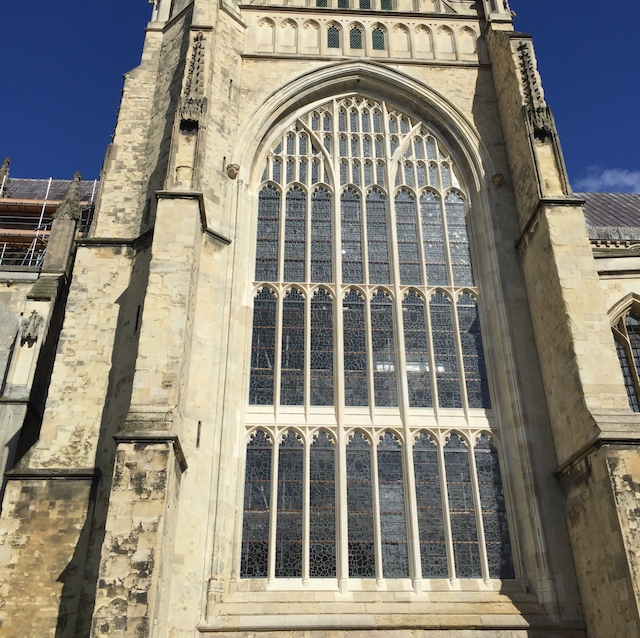
Canterbury Cathedral was rebuilt in 1070 AD using French limestone imported by William the Conqueror
Prior to that, Caen limestone was first used as a building stone by the Romans in the 1st century. Then, around a thousand years later, the same quarry produced the limestone that was shipped to England following the Norman Conquest in 1066.
It was the preferred building stone of the Normans and was often used ahead of the local British stone. The Norman builders would have been familiar with the stone and, as it was quarried in their own land, it would have been easier and cheaper for them to use.
The Caen stone continued to be popular and in 1120, Reading Abbey was built from the stone. Coincidentally, Reading Abbey was once the home of Reading School, although the school moved from the Abbey to its present site a little before my time there.
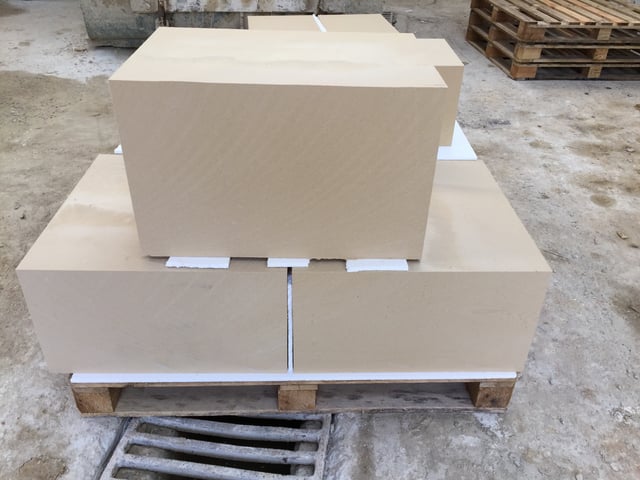
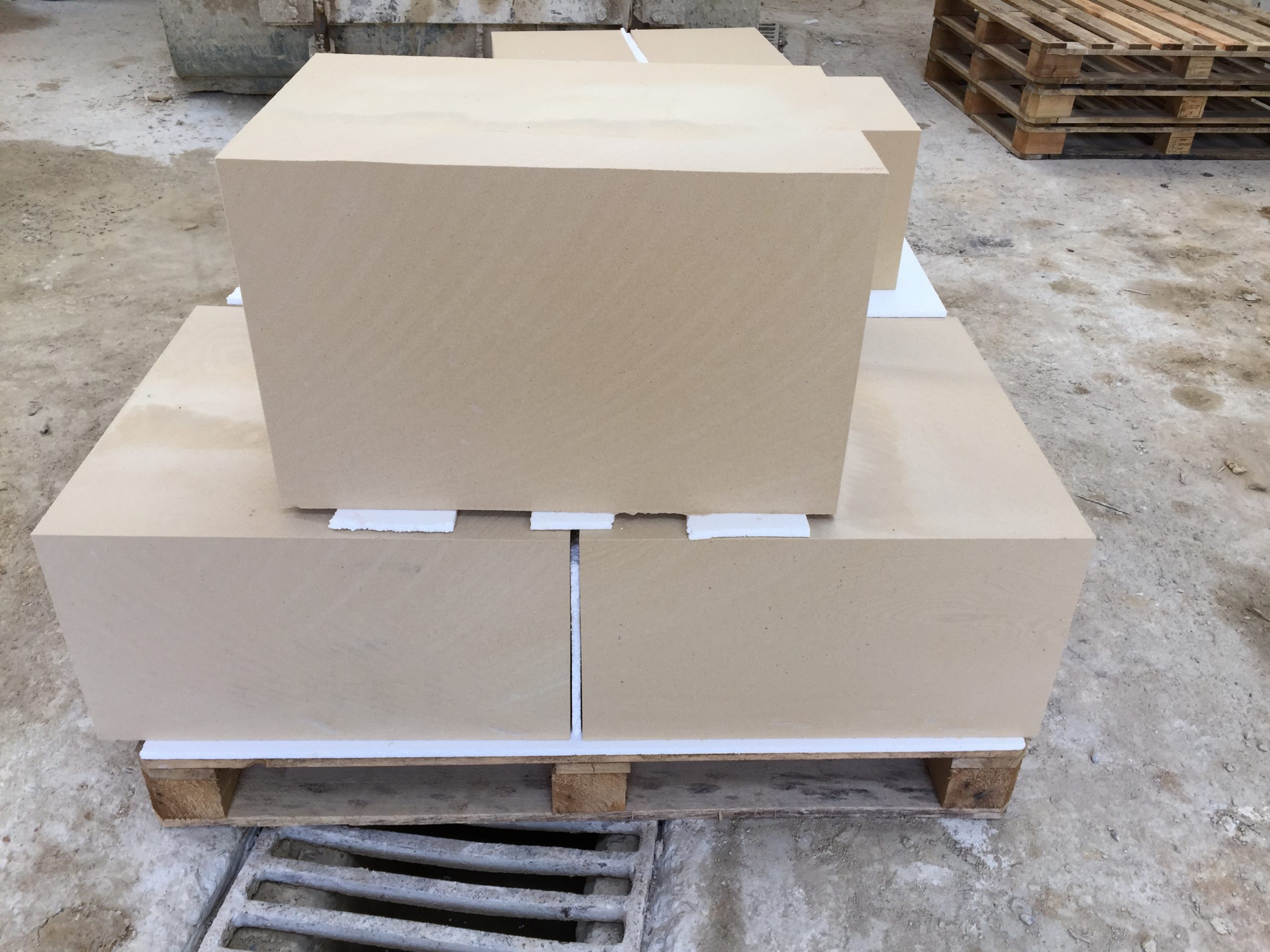
New blocks of cut to size Caen limestone – nowadays in quite short supply
Notable examples of Caen stone buildings:
Wikipedia lists some examples of where this historic limestone has been used:
- Caen stone was used in the construction of the late 11th century austere Norman Romanesque Church of Saint-Étienne, at the Abbaye-aux-Hommes (on the east side of Caen), which was founded by William the Conqueror, whose tomb is located there.
- The Norman Romanesque Church of La Trinité, at the Abbaye-aux-Dames (on the west side of the city), was founded by William’s wife, Matilda. Her tomb is located there.
- Both abbeys in Caen were built with Caen stone in Norman Romanesque style, and both were unscathed by heavy aerial bombing in July 1944 that destroyed much of the city, as they were being used by the local populace to shelter from the air raids.
- Used by the Normans for the cathedral and castle in Norwich, where it was brought by boat up the River Wensum. Caen stone was also used extensively in Canterbury cathedral. It was used by Henry I of England at Reading Abbey and fine examples of Romanesque sculpture in Caen stone are in the collection at the Museum of Reading.
- Perhaps the most famous building in Caen stone built in Norman times is the Tower of London.
- Caen stone continued to be a popular material in Britain after the Norman period. For example, it was used for parts of the 19th century clock tower at the Palace of Westminster.
[List taken from Wikipedia: https://en.wikipedia.org/wiki/Caen_stone]
Recently, the supply of Caen limestone in any quantity has become more difficult as the bed of good quality stone (Caen Banc Ferme) in the quarry is diminishing and the bed height is now little more than 250mm deep. There is still a plentiful supply of the deeper bedded Caen Demi-Ferme although it is structurally not as strong or consistent as the Caen Banc Ferme bed. So in order to maintain a supply of limestone that can be used for the restoration and repair of these historic buildings in the UK, efforts have been made to identify alternatives from other quarries that have similar properties.
One such stone is Lavoux (also known as Lépine) from the south west of France. This stone has been approved for the restoration work currently taking place at Canterbury Cathedral and has also been used extensively in York Minster, Gloucester, Lincoln and other UK cathedrals and heritage buildings.
There are two Lavoux beds – Lavoux à Grain, from the upper part of the quarry is the closest in colour and technical properties to the dwindling Caen Banc Ferme but the Lavoux has a much deeper bed of around 2 metres. The lower bed, Lavoux Fin, is deeper still and the stone is slightly whiter and has a finer grain. Both beds carve extremely well but the Lavoux Fin is particularly prized by sculptors for its ability to hold a very clean, sharp edge.
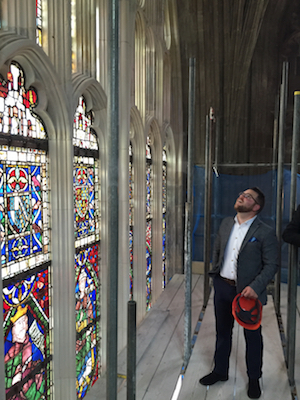
The image above shows one of Canterbury’s own stonemasons showing me the new Lavoux à Grain limestone in place in the Great South Window at the cathedral. The raw blocks were delivered to the Canterbury masons who then carved the intricate tracery that holds the 11th Century stained glass windows that are such a famous part of the cathedral.
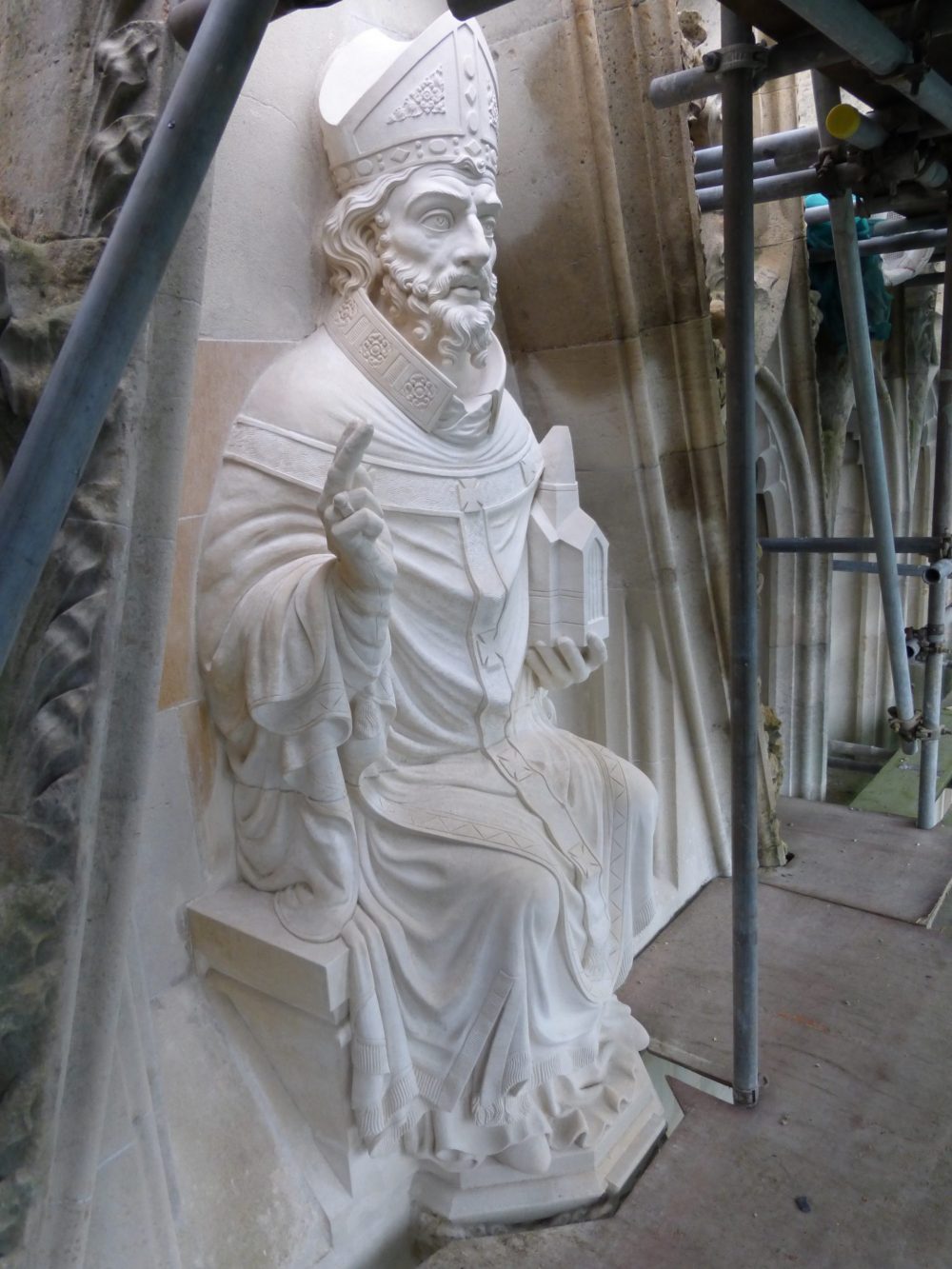
St Peter, York Minster – carved by Martin Coward in Lavoux Fin French limestone
The statue of St Peter was carved from two blocks of Lavoux Fin. The carving now sits high up on the east face of York Minster or the “Cathedral and Metropolitical Church of St. Peter” to give it its full name.
Canterbury Cathedral and York Minster both won prizes at the 2018 Natural Stone Awards for the quality of the workmanship.
For more details of French Limestone, please visit our main web site.


No responses yet